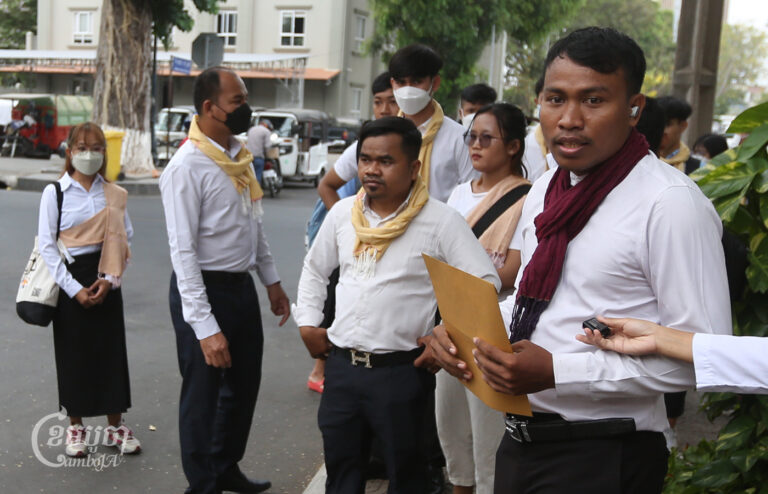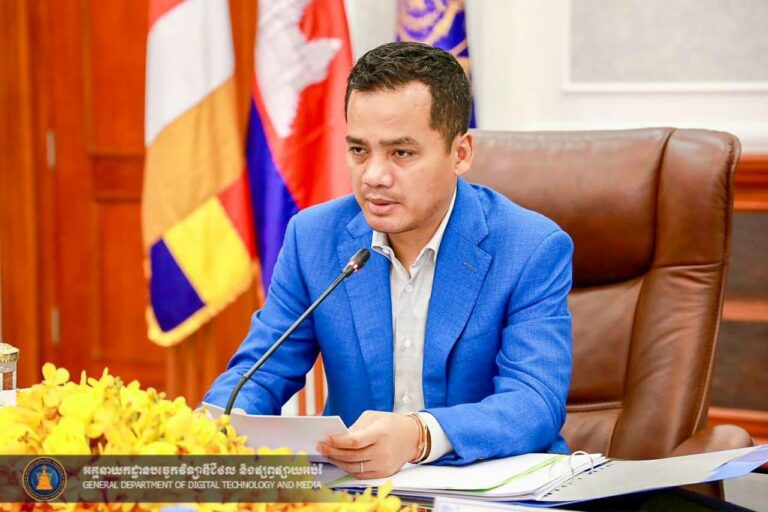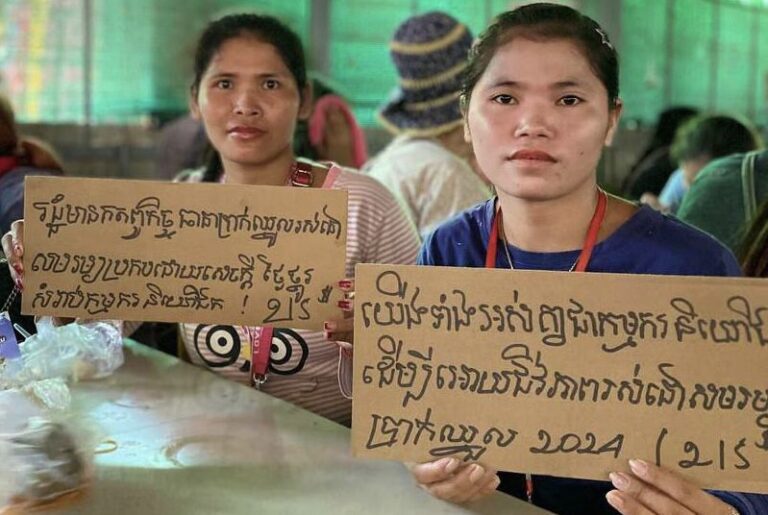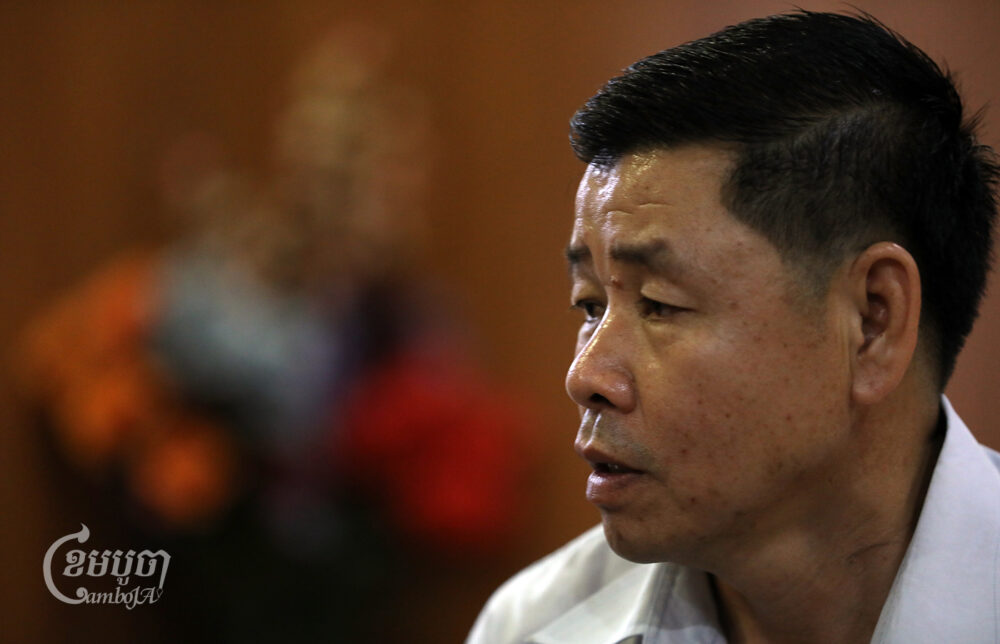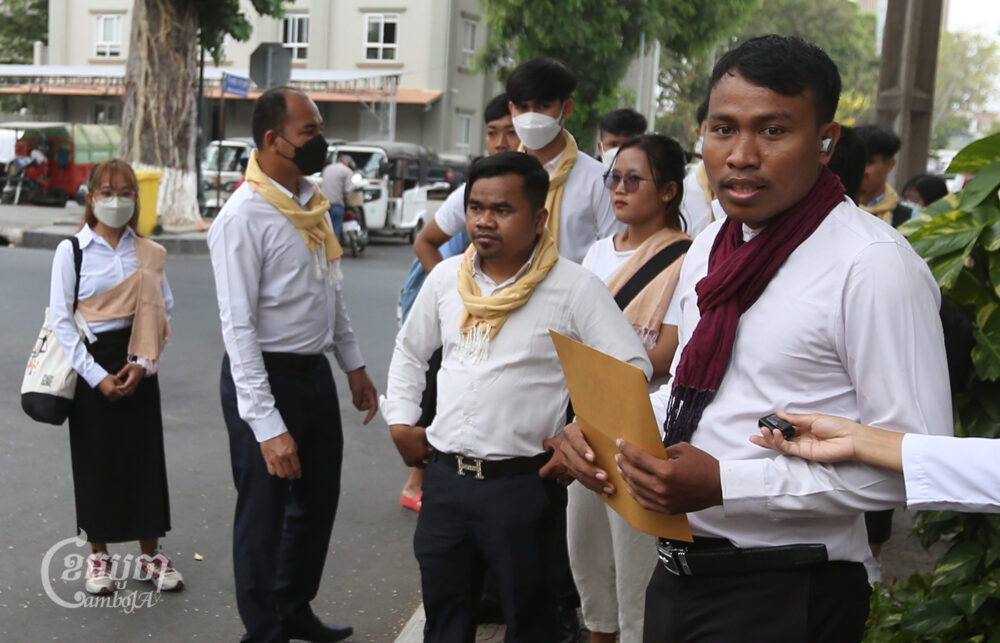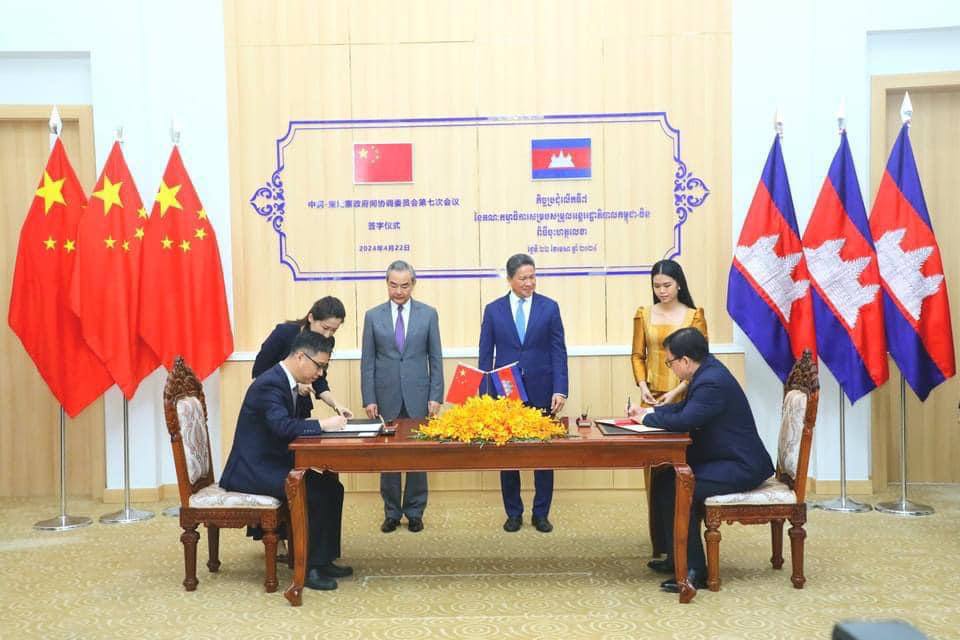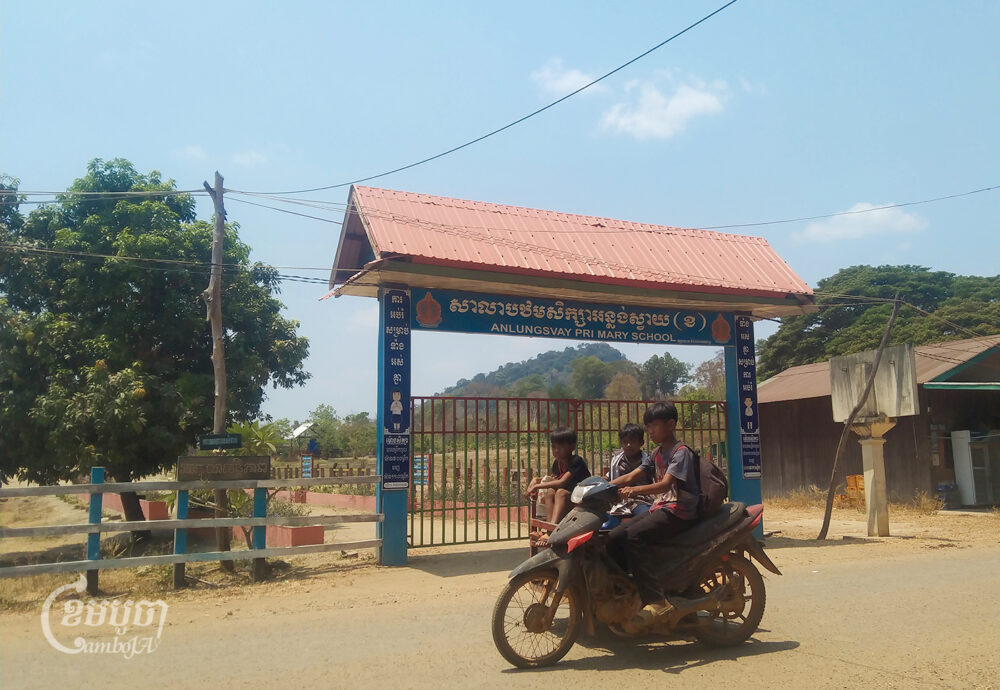On March 24, World Tuberculosis Day, hundreds gathered in Tboung Khmum province as part of a global awareness campaign, “Invest to End TB. Save Lives.”
Former TB patients, students, and local residents participated in the event held in Prey Spey pagoda in Ou Reang Euv district’s Kong Chey commune. After speeches given by representatives of the government, NGOs, and former TB patients, the group marched three kilometers from the pagoda to Ou Reang Euv district town.
The event was organized by the National Center for Tuberculosis and Leprosy Control (CENAT), Khana, and the USAID funded COMMit project.
Choub Sok Chamreun, executive director of health NGO Khana, said at the event that TB is the leading cause of death for people living with HIV. According to UNAIDS, out of 1,200 deaths in Cambodia in 2020 due to HIV, 470, or 39%, were from TB. The disease is also a major contributor to the development of antimicrobial resistance.
“Investing more resources will save millions of lives and accelerate the end of the TB epidemic,” said Sok Chamreun.
He urged those gathered to help disseminate information on the need for timely examination, diagnosis and treatment and advertise the show locations that offer TB services.
“Please continue this support and active participation to help our local community and Cambodia move toward achieving the goal of ending TB by 2030,” he said.
He added that according to the World Health Organization, about 4,100 people worldwide die from TB every day, and about 30,000 fall ill — though the disease can be prevented, treated and cured.
Huot Chan Yuda, director of National Center for Tuberculosis and Leprosy Control (CENAT) said that the government spends more than $1 million annually as part of their joint campaign to eradicate TB.
He said cases tend to be higher in border provinces, where people move frequently for work which makes the possibility of infection higher, as well as increases the chances a patient will be unable to start or finish a treatment course.
“So the TB issue at the border is a concern for the national tuberculosis project as well as the community,” he said. “I appeal to all the people, if they have symptoms such as a cough for more than 21 days, sudden weight loss, difficulty eating, or sweating at night, please come to the health center or hospital to consult and test for TB.”

Pes Yet, a former TB patient who lives in Tboung Khmum province’s Ou Reang Euv district, said that after going for a sputum examination, he was diagnosed with TB and received treatment through his local health center, with assistance from village health volunteers and community consultants from Khana.
“The first time I started to use the TB medicine, I had many difficulties and medical reactions, including itching all over my body and I couldn’t sleep at night,” he said. “After I found out that I was infected with TB, the people around me and especially my neighbors seemed to not dare or hesitated staying with me because they were concerned about TB infection.”
He said that TB made him stay apart from his family members and it meant he was unable to do some work because he was required to rest for his treatment and take care of his health to prevent infecting other people in the community.
“However, because of my determination and the support from the community officials from Khana and village health volunteers as well as the commune health center, I tried to take the medicine regularly. Even though there were severe side effects and obstacles, I did not stop the TB treatment,” he said.
Saing Saroeun, 68, a villager who lived in Doeum Changkran village, Ou Reang Euv district’s Chak commune and joined the event, said that his village health volunteer encouraged him to get tested because he suspected that TB may be the cause for his weight loss and fatigue.
“I want to know whether I have TB or not because I had symptoms like that,” Saroeun said. “I am happy for this event because I hope that the government and other partner organizations will help to educate all TB patients and Cambodia wouldn’t have TB more in the future.”
Lenna Neat Arango, Team Lead of Infectious Disease at USAID in Cambodia said that Cambodia is one of only three countries in the world that have achieved the End TB Strategy 2020 milestone of a 20% reduction in the TB incidence rate between 2015 and 2020. As a result, Cambodia is no longer one of the thirty high TB burden countries, although it is still on the watch list.
“We join with you today to reiterate our commitment to the September 2018 UN high-level meeting targets for TB,” she said at the event. “To reach these ambitious global targets by the end of this year, the world needs to treat 40 million TB patients, find and treat 1.5 million multi drug resistant TB patients and provide 30 million people with TB preventive therapy.”
“To help Cambodia reach its targets, in partnership with CENAT, USAID is supporting a set of complementary interventions that respond to the needs of the national TB program (NTP),” she added.
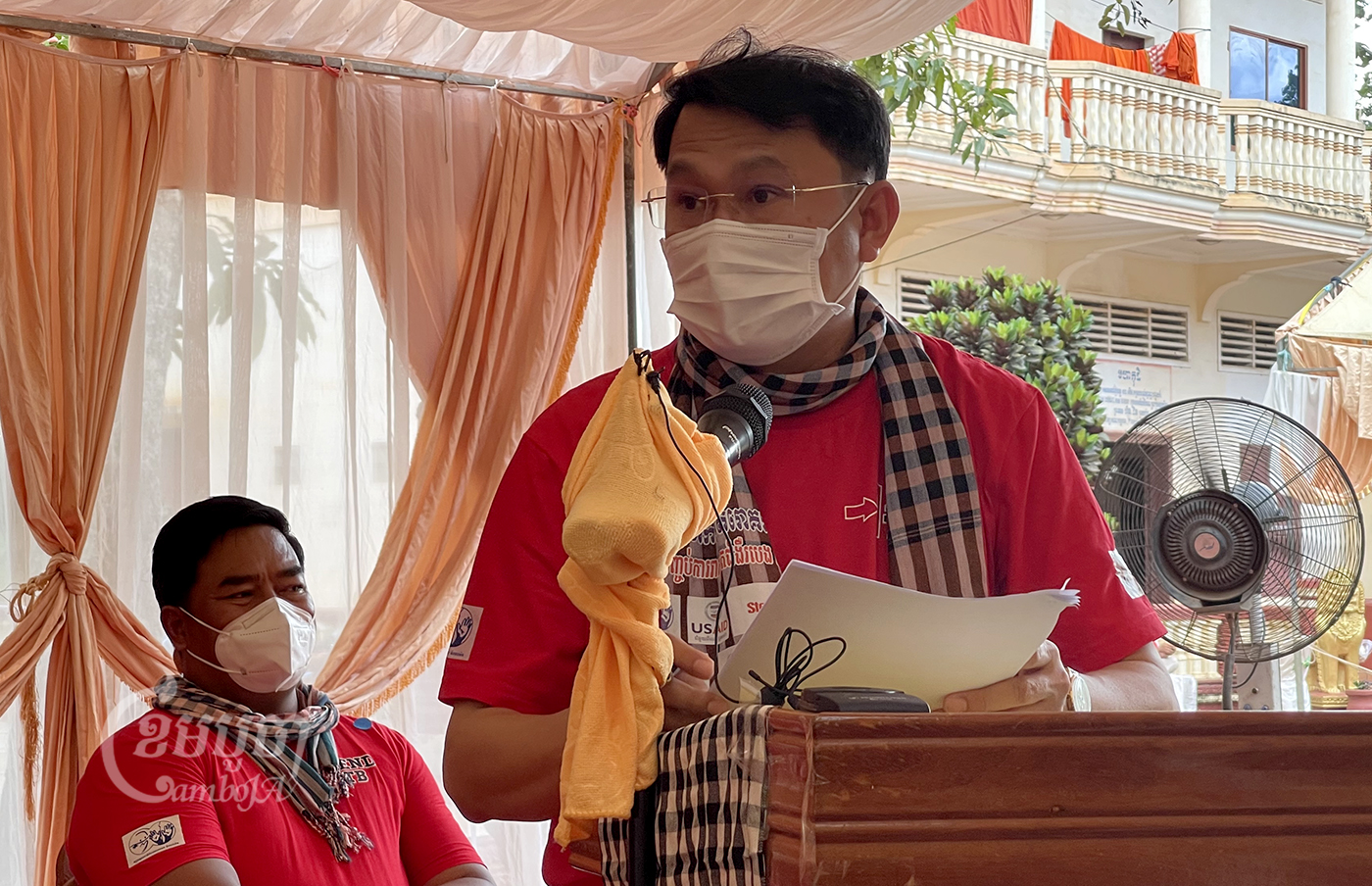
Keng Bunna, deputy Tboung Khmum provincial governor, said that the provincial administration was committed to the goal of ending TB by 2030.
“All towns and district administrations must include TB as a priority in their local development plans and must develop a plan and commit to ending TB in their respective localities in good cooperation with relevant organizations and institutions,” he said.
“I would like to ask all our people in Tbong Khmum to find out about TB, not to be ashamed, or fear discrimination, and to accept timely, accurate and effective screening, diagnosis and treatment,” he added. “Tuberculosis is a preventable disease that can be cured and cured one hundred percent and free of charge.”
CENAT director Huot Chan Yuda said that 21, 564 Tuberculosis cases were recorded last year, down from over 29,000 the previous year. However, he said that data might not be truly representative of how many people actually had TB, because fewer sick people may have gone to the clinic due to the pandemic.



